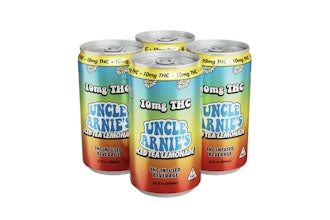
High-quality, top-selling pre-rolls don't just happen. They take planning and attention to detail at every level of the production process to ensure that the final product stands out in a crowded retail environment and is something that keeps customers coming back.
And it all starts with the grind and the sift.
In the early days of the cannabis industry, pre-rolls were almost an afterthought, with producers using their trim and other leftover material to pack their pre-rolled cones, which often led to harsh, fast-burning smokes. But as the industry has matured and customers have come to expect that their pre-rolls be as high-quality a product as flower or extracts, producers have had to adapt to meet those needs.
First and foremost, that means selecting actual buds to pack into your pre-rolled cones and then grinding and sifting your flower to ensure a consistent particle size, much like you would do at home if rolling a joint or packing your own pre-roll. This not only provides the potency that customers have come to expect but also prevents your finished pre-rolls from running or "canoeing," which is usually a result of poorly packed cones caused in part by inconsistent particles that leave gaps inside the cone and disrupt an even airflow through the pre-roll.
But getting the perfect grind, particularly on an industrial scale, requires the right grinding equipment. Many companies, especially those just starting out, try to skirt this step by purchasing blenders, food processors, whip-style grinders or shredders. These machines give you less control over your particle size and use high-RPM motors that generate a lot of heat, damaging the valuable trichomes and terpenes of the cannabis plant, resulting in less potent, less flavorful pre-rolls.
An industrial cannabis grinder, on the other hand, uses a low-RPM, high-torque motor that creates less heat. It also has three different screen sizes to allow more control over particle size, which is important if you are dealing with multiple strains that have different moisture contents, density, and levels of stickiness.
 The pre-roll shredder machine from Custom Cones USA.Custom Cones USA
The pre-roll shredder machine from Custom Cones USA.Custom Cones USA
An industrial cannabis grinder is also made from food-grade stainless steel and is easy to take apart and clean, leading to less downtime, particularly if you purchase spare parts like additional grinder blades. In fact, with an additional grinder blade and other spare parts like additional screens, you never have to stop grinding, even when doing the daily maintenance necessary to keep your machinery running smoothly.
And here's a pro tip: Keep your spare blade in a freezer and ready to swap in when needed.
It may sound strange, but keeping your grinder blades – as well as the room where you keep your grinder – cold helps prevent oils and other gunk from building up on your machine, which not only keeps the machine working better but means those trichomes and cannabinoids are staying in your flower and in your pre-roll—where your customers want them.
 A replacement blade for the Industrial Cannabis Grinder from Custom Cones USA.Custom Cones USA
A replacement blade for the Industrial Cannabis Grinder from Custom Cones USA.Custom Cones USA
Don't Overlook Sifting
But while important, the grind is not the only pre-filling step necessary to produce a high-quality pre-roll. Often overlooked, sifting can save plenty of headaches further down the production line. Not only does sifting ensure consistency in particle size, but it also helps remove any stem fragments and seeds that can lead to a harsher smoke or even tear your pre-rolled cones.
Sifting is essentially a quality control process for your pre-rolls. However, care needs to be taken not to over-sift your flower, which can separate the trichomes from the flower, resulting in an excess amount of kief. We also recommend mixing your kief back in with your sifted flower to enhance potency and flavor and allow a second drying/curing period before packing since agitating the trichomes enhances their stickiness.
 The Quick Sift vibrating flower sifter from Custom Cones USA.Custom Cones USA
The Quick Sift vibrating flower sifter from Custom Cones USA.Custom Cones USA
Machines like our Quick Sift cannabis sifter, which has multiple screen options to meet various particle size needs, benefit companies that have automated pre-roll production processes. Automated machinery often requires consistent, free-flowing particles to keep them working smoothly, which can only be achieved through proper sifting.
No matter what pre-roll filling machine you use, your first steps will determine the success of your final product. So make sure you don't overlook the grinding and sifting.
Always talk with an expert to determine what machinery, including grinders and sifters, makes the most sense for your pre-roll production.
 The Grinder and Mini Quick Sift from Custom Cones USA.Custom Cones USA
The Grinder and Mini Quick Sift from Custom Cones USA.Custom Cones USA























